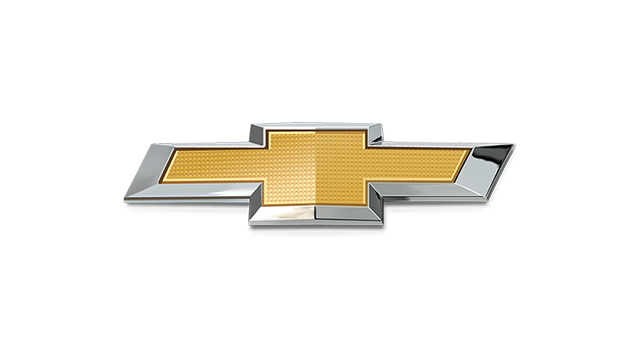I do not want this 1937 Plymouth to fall under the ‘Treasure or Trash?’ section because it’s obvious that nobody in his right mind will sell this car ‘per kilo’.
However, I do know that opinion is split when a choice has to be made to either restore a car to better-than-showroom condition, or to maintain an aged patina.


On the one hand, making a car look like it just rolled off the factory floor will earn the approval of obsessive-compulsive restorers. On the other hand, it is almost impossible to duplicate the results of natural aging. When the conditions for weathering through the years are right, the effect of rust and faded paint can look really good on an old car.
The original owner, who is now 86 years old, says that his Plymouth is the very first car to find a home in Binan, Laguna. Apart from that distinction, his car also has a storied past. In 1942, Japanese soldiers commandeered the car and used it as a military vehicle. But when the WWII ended in 1945, a friend of the owner found the car abandoned in Binondo. The owner then tracked it down and brought it back home.
The car has been parked under this fellow’s house since 1970. It was only a few weeks ago that the owner found Alfred’s shop after seeing a TV feature about the popular car restorer. Now, the Plymouth belongs to Alfred. The car could not be in better hands.
Let’s take a closer look at it.

The faded and rusty textures on the body can be considered art.

Here’s a close-up of the headlight housing. The texture of the surface rust is almost like fine-grit sandpaper. This type of headlamp configuration was common during the '30s.

This is a beautiful crest. It is a sailboat. You will see the art-deco style of the ’30s here. In fact, the whole car is an example of automotive art deco.

I would love to own a car with suicide doors. There is something very classy about them. Also notice that this unit is right-hand drive.

This car is 95-percent complete. Alfred had already removed the seats before I arrived. The floor had already rusted away, but that’s an easy fix.

Here’s a view of the six-cylinder flathead engine. We are happy to find out that this power plant will be rebuilt. Running gear will also remain as original as possible.

The chrome hinges have broken. I would leave them that way, actually.

There’s more rust back here. The sailboat-theme carries on to the emblems. My theory is that Plymouth used a stylized sailboat on its emblems because the first American settlers who landed on Plymouth Rock arrived on sailboats. Do not quote me on that.

A shot of the sexy split window at the rear.

For such a big car, this Plymouth has tiny taillights. The fuel-filler cap is positioned nearby.

It is great that Alfred’s shop is on my bicycle route to the office. I am always the first to see some really rare automobiles.
So, what do you think? Should this car’s patina be preserved? Or should this car see a frame-off restoration?

 On the one hand, making a car look like it just rolled off the factory floor will earn the approval of obsessive-compulsive restorers. On the other hand, it is almost impossible to duplicate the results of natural aging. When the conditions for weathering through the years are right, the effect of rust and faded paint can look really good on an old car.
The original owner, who is now 86 years old, says that his Plymouth is the very first car to find a home in Binan, Laguna. Apart from that distinction, his car also has a storied past. In 1942, Japanese soldiers commandeered the car and used it as a military vehicle. But when the WWII ended in 1945, a friend of the owner found the car abandoned in Binondo. The owner then tracked it down and brought it back home.
The car has been parked under this fellow’s house since 1970. It was only a few weeks ago that the owner found Alfred’s shop after seeing a TV feature about the popular car restorer. Now, the Plymouth belongs to Alfred. The car could not be in better hands.
Let’s take a closer look at it.
On the one hand, making a car look like it just rolled off the factory floor will earn the approval of obsessive-compulsive restorers. On the other hand, it is almost impossible to duplicate the results of natural aging. When the conditions for weathering through the years are right, the effect of rust and faded paint can look really good on an old car.
The original owner, who is now 86 years old, says that his Plymouth is the very first car to find a home in Binan, Laguna. Apart from that distinction, his car also has a storied past. In 1942, Japanese soldiers commandeered the car and used it as a military vehicle. But when the WWII ended in 1945, a friend of the owner found the car abandoned in Binondo. The owner then tracked it down and brought it back home.
The car has been parked under this fellow’s house since 1970. It was only a few weeks ago that the owner found Alfred’s shop after seeing a TV feature about the popular car restorer. Now, the Plymouth belongs to Alfred. The car could not be in better hands.
Let’s take a closer look at it.
 The faded and rusty textures on the body can be considered art.
The faded and rusty textures on the body can be considered art.
 Here’s a close-up of the headlight housing. The texture of the surface rust is almost like fine-grit sandpaper. This type of headlamp configuration was common during the '30s.
Here’s a close-up of the headlight housing. The texture of the surface rust is almost like fine-grit sandpaper. This type of headlamp configuration was common during the '30s.
 This is a beautiful crest. It is a sailboat. You will see the art-deco style of the ’30s here. In fact, the whole car is an example of automotive art deco.
This is a beautiful crest. It is a sailboat. You will see the art-deco style of the ’30s here. In fact, the whole car is an example of automotive art deco.
 I would love to own a car with suicide doors. There is something very classy about them. Also notice that this unit is right-hand drive.
I would love to own a car with suicide doors. There is something very classy about them. Also notice that this unit is right-hand drive.
 This car is 95-percent complete. Alfred had already removed the seats before I arrived. The floor had already rusted away, but that’s an easy fix.
This car is 95-percent complete. Alfred had already removed the seats before I arrived. The floor had already rusted away, but that’s an easy fix.
 Here’s a view of the six-cylinder flathead engine. We are happy to find out that this power plant will be rebuilt. Running gear will also remain as original as possible.
Here’s a view of the six-cylinder flathead engine. We are happy to find out that this power plant will be rebuilt. Running gear will also remain as original as possible.
 The chrome hinges have broken. I would leave them that way, actually.
The chrome hinges have broken. I would leave them that way, actually.
 There’s more rust back here. The sailboat-theme carries on to the emblems. My theory is that Plymouth used a stylized sailboat on its emblems because the first American settlers who landed on Plymouth Rock arrived on sailboats. Do not quote me on that.
There’s more rust back here. The sailboat-theme carries on to the emblems. My theory is that Plymouth used a stylized sailboat on its emblems because the first American settlers who landed on Plymouth Rock arrived on sailboats. Do not quote me on that.
 A shot of the sexy split window at the rear.
A shot of the sexy split window at the rear.
 For such a big car, this Plymouth has tiny taillights. The fuel-filler cap is positioned nearby.
For such a big car, this Plymouth has tiny taillights. The fuel-filler cap is positioned nearby.
 It is great that Alfred’s shop is on my bicycle route to the office. I am always the first to see some really rare automobiles.
So, what do you think? Should this car’s patina be preserved? Or should this car see a frame-off restoration?
It is great that Alfred’s shop is on my bicycle route to the office. I am always the first to see some really rare automobiles.
So, what do you think? Should this car’s patina be preserved? Or should this car see a frame-off restoration?










